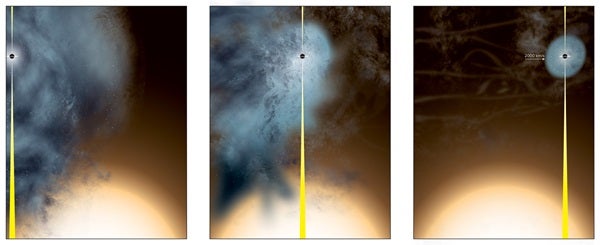Astronomers found a nearly-naked supermassive black hole emerge from the shredded remains of a galaxy and speed away at more than 2,000 miles per second.
This discovery, which was made using the National Science Foundation’s Very Long Baseline Array (VBLA), was part of a program to detect supermassive black holes that are not in the center of their galaxies.
While most supermassive black holes are at the center of the galaxies, an object called B3 1715+425 seems to be breaking that pattern. This object was in a cluster of galaxies called ZwCl 8193 and is a supermassive black hole that is in an unexpectedly small, faint galaxy. The object is leaving ionized gas behind as it speeds away from a much larger galaxy’s core.
“We were looking for orbiting pairs of supermassive black holes, with one offset from the center of a galaxy, as telltale evidence of a previous galaxy merger,” James Condon, of the National Radio Observatory, said in a press release. “Instead, we found this black hole fleeing from the larger galaxy and leaving a trail of debris behind it.”
The galaxies the astronomers were observing are more than 2 billion light-years away from Earth and were stripped of their stars and gasses after an encounter where the smaller galaxy passed through a larger one. The only remnants of the galaxy are its black hole and a small area about 3,000 light-years across.
According to Concon, the remnant will lose mass and stop forming stars as it continues speeding on until it becomes untraceable, as black holes are invisible to most instruments unless they are interacting with gases or other matter.
The scientists are reporting their findings to the Astrophysical Journal and will continue observing more objects as a part of their long-term project with the VBLA.










